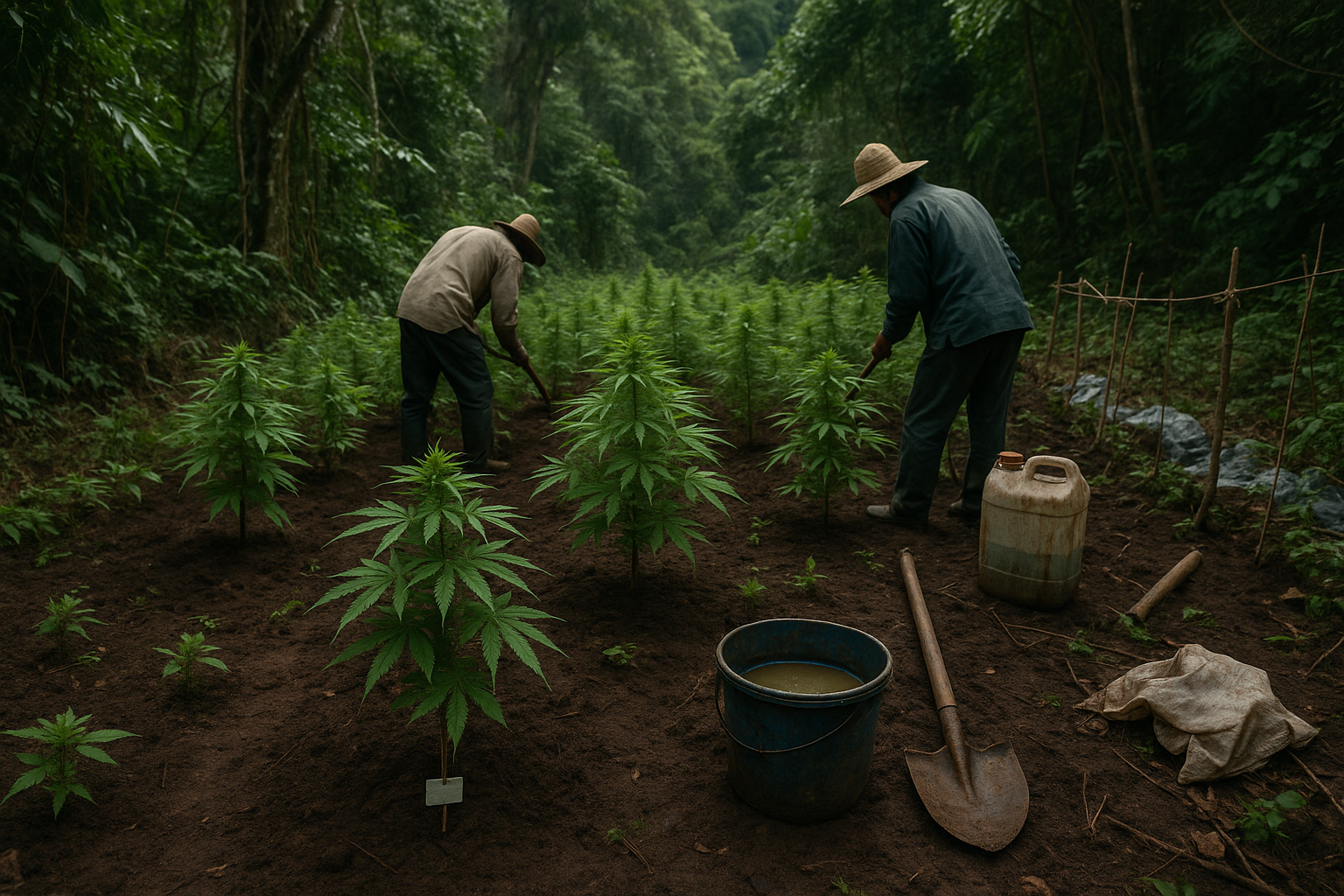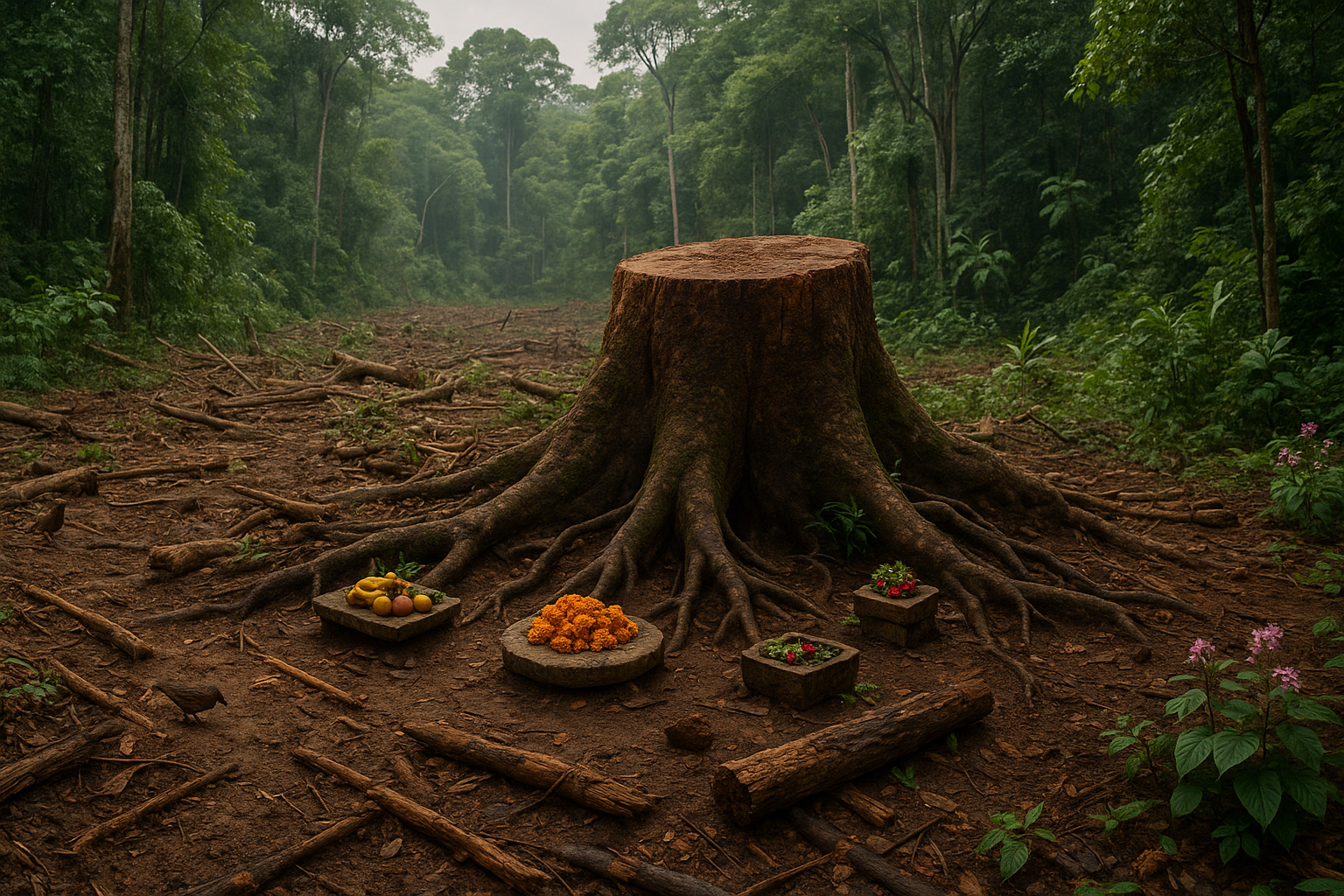In the verdant heart of nature, where the whispers of ancient traditions meet the vibrant pulse of the modern world, sacred herbs have held a place of honor for millennia. These plants, revered for their spiritual and medicinal properties, are more than just flora; they are the keepers of cultural heritage and spiritual wisdom. However, beneath their hallowed status lies a shadowy reality that threatens to undermine their sacredness. 🌿
The illegal cultivation of sacred herbs has become an insidious practice, often hidden from the untrained eye but with consequences that echo loudly across the environment, local economies, and cultural landscapes. This clandestine industry, driven by global demand and the allure of high profit margins, poses a significant threat not only to the ecosystems where these plants naturally thrive but also to the cultural sanctity they embody. As we delve into the murky world of illegal herb cultivation, it becomes imperative to shed light on the practices that jeopardize the very essence of what makes these herbs sacred.
Throughout this article, we will navigate the complex web of factors fueling the illegal trade of sacred herbs. From the lush fields of the Amazon rainforest, where ayahuasca vines are harvested unsustainably, to the high altitudes of the Himalayas, where rare herbs are uprooted indiscriminately, the impact of illegal cultivation reverberates far and wide. 🌍 Each region tells a story of exploitation and imbalance, where local communities, often the stewards of these sacred plants, find themselves caught in the crossfire between tradition and illegal profiteering.
The allure of sacred herbs is undeniable. Many seek their healing and spiritual properties, hoping to tap into ancient wisdom and connect with something greater than themselves. However, as the demand for these mystical plants grows, so does the pressure on their natural habitats and the traditional practices that surround their cultivation and use. This article will examine how global demand is both a blessing and a curse for sacred herbs, driving innovation and appreciation on one hand, while fostering illegal and unsustainable practices on the other.
As we peel back the layers of this complex issue, it is crucial to understand the socio-economic dimensions at play. The illegal trade of sacred herbs is often intertwined with broader issues of poverty, lack of regulation, and economic opportunity in rural areas. For many communities, engaging in the illegal herb trade may seem like the only viable economic option. This reality paints a grim picture of desperation and survival, one that highlights the need for sustainable economic alternatives that honor and preserve cultural traditions.
Moreover, the environmental repercussions of illegal herb cultivation are far-reaching. The destruction of natural habitats, soil depletion, and biodiversity loss are just a few of the ecological consequences. These practices not only threaten the sustainability of sacred herbs but also contribute to broader environmental degradation, affecting ecosystems and wildlife. In this article, we will explore the environmental toll of illegal herb cultivation, emphasizing the need for conservation and sustainable practices that respect both nature and culture.
Lastly, we will discuss the role of legislation and enforcement in combating the illegal trade of sacred herbs. While laws exist to protect these plants, enforcement is often lacking or inconsistent, allowing illegal activities to flourish. Through interviews with experts and case studies, we will uncover the challenges faced by authorities in regulating this complex trade and highlight successful initiatives that offer hope for the future.
Join us on this enlightening journey as we unearth the dark side of sacred herbs, a story of exploitation and resistance, of ancient wisdom threatened by modern greed. By understanding the intricate dynamics at play, we can advocate for change and contribute to the preservation of these sacred treasures for generations to come. Let’s embark on this quest for knowledge and justice, with respect for the sacred and a commitment to safeguarding the natural and cultural wealth of our world. 🌱✨

Conclusion
As we conclude our exploration of the dark secrets of sacred herbs, it becomes clear that these plants dwell in the liminal space between reverence and fear — symbols of both divine wisdom and forbidden power. Throughout history, sacred herbs have been used to heal, to awaken, and to transcend, yet their mystical potency often led to suppression, secrecy, and misunderstanding.
The true mystery of sacred herbs lies in their dual nature. 🌎💫 Many hold the power to soothe or to poison, to open the mind or cloud it — reflecting humanity’s own struggle to balance knowledge with responsibility. Once central to ancient rituals and spiritual journeys, these plants remind us that sacredness is not always gentle; it is transformative, demanding respect, discipline, and awareness. Ultimately, uncovering the dark secrets of sacred herbs is not about unmasking danger, but rediscovering wisdom — a return to the delicate art of honoring nature’s power with humility and intention.
Toni santos is a cultural storyteller and botanical history researcher devoted to uncovering the hidden narratives of cryptobotany and lost plant lore. With a lens focused on forgotten flora, Gabriel explores how ancient communities discovered, used, and ritualized plants — seeing them not merely as resources, but as vessels of meaning, identity, and ancestral memory.
Fascinated by mythical plants, vanished species, and secret ethnobotanical knowledge, Gabriel’s journey weaves through herbal manuscripts, oral traditions, and forgotten botanical practices passed down in fragments. Each story he tells is a reflection on the power of plants to heal, connect, and preserve cultural wisdom across time.
Blending ethnobotany, folklore studies, and cultural storytelling, Gabriel researches the plants, uses, and rituals that once shaped societies — uncovering how lost plant lore reveals deep interconnections between belief, nature, and survival. His work honors the healers, shamans, and herbalists who safeguarded this knowledge beyond the reach of written history.
His work is a tribute to:
-
The sacred role of plants in ancestral rituals
-
The beauty of forgotten botanical knowledge and uses
-
The enduring link between nature, culture, and myth
Whether you are passionate about ancient herbal traditions, curious about plant folklore, or intrigued by the mysteries of cryptobotany, Gabriel invites you on a journey through green lore and living memory — one plant, one ritual, one story at a time.





